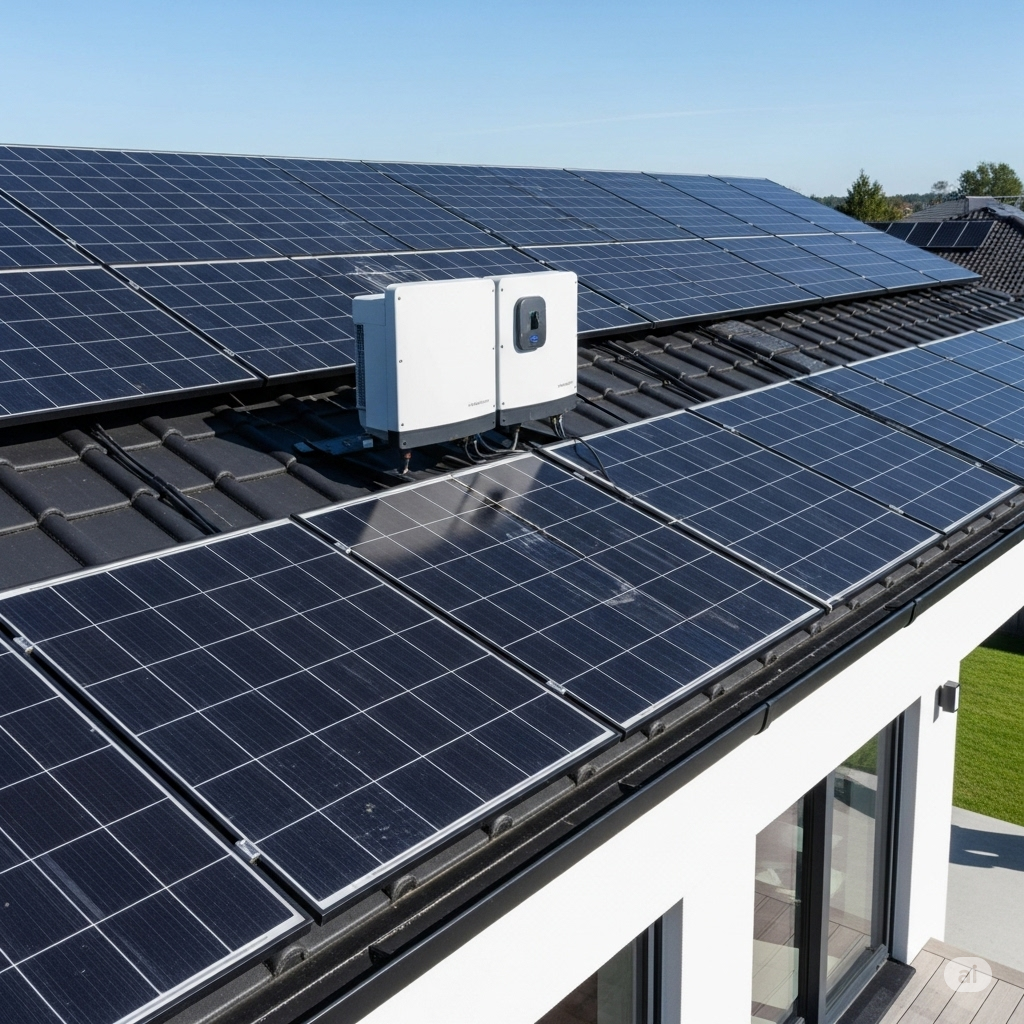
A solar installation system, often referred to as a solar photovoltaic (PV) system, harnesses sunlight to generate electricity.1 This electricity can then be used to power homes, businesses, or even entire communities, reducing reliance on traditional fossil fuel-based power sources and lowering carbon emissions
I. Core Components:
- Solar Panels (PV Modules): These are the most visible part of the system. Each panel is made up of multiple photovoltaic cells, typically made from silicon. When sunlight (photons) strikes these cells, it excites electrons, creating an electric current (DC - direct current).
- Types:
- Monocrystalline: High efficiency, sleek appearance, more expensive.
- Polycrystalline: Slightly lower efficiency than monocrystalline, more cost-effective.
- Thin-film: Flexible, can be integrated into building materials, lower efficiency but good for certain applications.
- Types:
- Mounting System/Racking: This securely holds the solar panels in place, typically on a roof or ground-mounted array.The mounting system is designed to withstand local wind loads and ensure optimal panel tilt and orientation for maximum sun exposure.
- Roof Mounts: Penetrate the roof or use non-penetrating methods for flat roofs.
- Ground Mounts: Ideal for properties with ample land, allowing for adjustable tilt.
- Pole Mounts: Elevate panels for improved sun exposure and security.
- Inverter: This is a crucial component that converts the DC electricity produced by the solar panels into AC (alternating current) electricity, which is the standard form of electricity used in homes and businesses.
- String Inverters: A single inverter handles a "string" of panels. Cost-effective but performance can be impacted if one panel is shaded.
- Microinverters: One microinverter is attached to each individual solar panel.1This maximizes energy harvest even with partial shading, and provides panel-level monitoring.
- Hybrid Inverters: Combine a solar inverter and a battery inverter, allowing for direct connection to batteries for energy storage.
- Cabling and Wiring: High-quality, UV-resistant cables connect the solar panels to the inverter and then to the electrical panel of the building. Proper wiring ensures safe and efficient transfer of electricity.
- Disconnects (DC and AC): Safety switches that allow for manual shutdown of the solar system for maintenance or emergencies.
- Metering:
- Production Meter: Measures the total electricity generated by the solar system.
- Net Meter (Bi-directional Meter): For grid-tied systems, this meter tracks both electricity drawn from the grid and excess electricity fed back into the grid.
- Electrical Panel (Breaker Box): The solar system is connected to the existing electrical panel of the building, feeding the generated AC electricity into the home's electrical system.
II. System Types:
- Grid-Tied (On-Grid) System:
- Description: The most common type. The solar system is connected to the public utility grid.
- Functionality: During the day, if the solar panels produce more electricity than the home consumes, the excess is sent back to the grid (often through net metering, where the utility credits the homeowner). When the solar system isn't producing enough (e.g., at night, during cloudy days), the home draws electricity from the grid.
- Advantages: Lower initial cost, no batteries needed, continuous power supply from the grid.
- Disadvantages: No power during grid outages (unless equipped with a battery backup and critical load panel).
- Off-Grid (Stand-Alone) System:
- Description: Completely independent of the utility grid. All generated electricity must be either consumed or stored.
- Additional Components:
- Battery Bank: Stores excess electricity generated during the day for use at night or during periods of low sunlight.
- Charge Controller: Regulates the flow of electricity from the solar panels to the battery bank, preventing overcharging and25 prolonging battery life.
- Advantages: Energy independence, ideal for remote locations without grid access.
- Disadvantages: Higher upfront cost due to batteries, larger system required to meet demand, battery maintenance.
- Hybrid System:
- Description: Combines aspects of both grid-tied and off-grid systems. It's connected to the grid but also incorporates battery storage.
- Functionality: Can draw from the grid, send excess power to the grid, and store excess solar energy in batteries for later use or during grid outages.
- Advantages: Energy independence during outages, optimization of self-consumption, potential for time-of-use rate arbitrage (using stored solar during peak grid pricing).
- Disadvantages: Higher cost than a standard grid-tied system.
III. How it Works (Simplified Flow):
- Sunlight Absorption: Solar panels absorb sunlight.
- DC Electricity Generation: The photovoltaic effect within the panels converts sunlight into DC electricity.
- DC to AC Conversion: The inverter converts the DC electricity into usable AC electricity.
- Powering the Load: The AC electricity powers the appliances and lights in the home or business.
- Grid Interaction (for Grid-Tied/Hybrid):
- Excess Power: If the solar system generates more electricity than needed, the excess is fed back into the utility grid.
- Insufficient Power: If the solar system doesn't generate enough, the home draws power from the grid.
- Battery Storage (for Off-Grid/Hybrid): Excess solar energy is stored in batteries for later use.
IV. Benefits of Solar Installation Systems:
- Environmental: Reduces carbon footprint, decreases reliance on fossil fuels, contributes to cleaner air.
- Economic: Lower electricity bills, potential for energy independence, increased property value, eligibility for government incentives/rebates.
- Reliability: Provides a consistent power source, especially with battery backup.
- Sustainability: Utilizes a renewable energy source.
Solar installation system is a sophisticated yet increasingly accessible technology that empowers individuals and organizations to generate their own clean electricity, contributing to a more sustainable and energy-independent future.
- Teacher: COLLINS OKWACH

